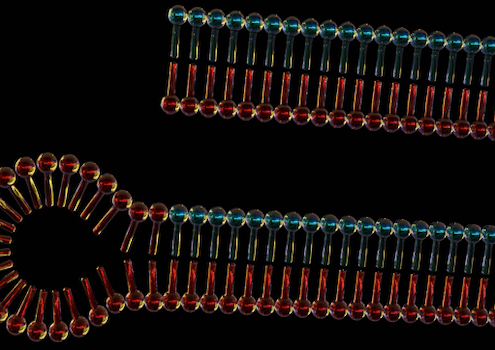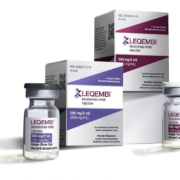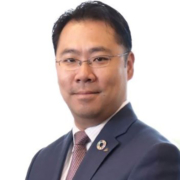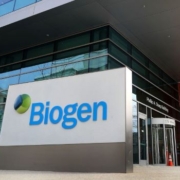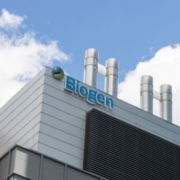The promise and perils of antisense therapies in CNS diseases
The promise and perils of antisense therapies in CNS diseases
Published: Jun 05, 2023
By Heather McKenzie
BioSpace
The recent FDA approval of Biogen’s Qalsody for superoxide dismutase 1 (SOD1)–ALS highlighted the potential for antisense oligonucleotides in central nervous system diseases. But the recent failure of Wave Life Sciences’ WVE-004 in C9orf72–ALS also showed their limitations.
Antisense oligonucleotides (ASOs) are short oligonucleotides that can modify gene expression and mRNA splicing. As of 2021, the FDA had approved 14 oligonucleotide therapeutics, with rare genetic diseases, retinal diseases and neuromuscular diseases dominating the list.
Biogen, which licensed Qalsody from Ionis Pharmaceuticals in 2018, is currently studying the therapy in pre-symptomatic adults with SOD1 mutation. When neurons degenerate and die, they release neurofilament light chain (NfL). The participants in Biogen’s ATLAS trial will begin treatment when a spike in NfL is evident, Brett Monia, CEO of Ionis, told BioSpace.
Monia said he believes Qalsody could prevent the disease process from ever starting in these individuals and drew parallels between Qalsody and Spinraza, the first drug approved for a neurodegenerative disease developed on Ionis’s ASO platform.
Spinraza was approved in December 2016 as the first disease-modifying therapy for spinal muscular atrophy (SMA) caused by mutations in the survival motor neuron 1 (SMN1) gene. In the NURTURE study, it demonstrated long term efficacy in pre-symptomatic infants with a mutation in the SMN1 gene.
“The majority of those children today are living normal lives,” Monia said. “We’d never know that they have SMA. That’s a motor neuron, neurodegenerative disease like ALS, so we don’t have data in SOD1-ALS patients, but there’s reason to believe.”
Challenges Persist
Still, challenges persist as all targets are different. In Phase Ib/IIa trial results announced May 24, Wave’s WVE-004 failed to show any clinical benefit after 24 weeks in 35 people with C9orf72 (C9)-associated ALS or frontotemporal dementia (FTD).
Mutations in the C9orf72 gene cause the accumulation of G4C2 RNA, which produce poly(GP) proteins. While studies have shown poly(GP) to be an effective biomarker in C9-ALS, Wave reported that reductions in this protein did not correlate to clinical success.
“Unfortunately, the biological impact of knocking down the target RNA did not translate to clinical benefit,” Paul Bolno, president and CEO at Wave, told BioSpace. “The lack of any corresponding clinical benefit illustrates the complexity of the disease and, unfortunately, that other biological factors may be at play.”
Bolno said a key consideration in drug development for any neuromuscular or neurodegenerative disease is the availability of biomarkers correlated to functional outcomes.
“Progress in these diseases has been limited across modalities, not just in the oligonucleotide field, and biomarkers that can tell you if you have a high probability of changing the disease trajectory and which can be incorporated early in drug discovery and development will help accelerate research and de-risk investments in this area.”
Before Wave struck out against C9orf72 (C9)-ALS, Ionis and Biogen abandoned their ASO, BIIB078, in March 2022 after failing to show clinical benefit in a Phase I trial.
C9-ALS may be caused by a toxic gain of function, a toxic loss of function cause, or a combination of both, Monia said. BIIB078 was designed to target the toxic gain of function, “which is exactly what it did. It blocked production of the presumed toxic peptides that were hypothesized to be a cause of the disease. We proved that hypothesis wrong.”
Ben Boros, M.D., Ph.D. candidate in Tim Miller’s lab at Washington University School of Medicine, called C9-ALS a messy disease. “The C9 part of ALS is only a recent discovery in the last decade, and SOD1–[ALS] is sitting on decades of research. I think that might be one contributing factor,” he told BioSpace.
Delivery is a primary challenge across RNA therapeutics—ASOs are no different. Monia said last decade has been pivotal in moving the research forward.
“We’re making great strides in tackling the blood-brain barrier [in] CNS diseases,” he said. Ionis’ 12 clinical-stage drugs are all delivered intrathecally. The earliest ones were delivered monthly, but Monia said further optimization of the company’s platform has allowed it to move to biannual dosing and he believes annual dosing is possible.
“But [intrathecal delivery] is still an invasive procedure,” he said. “We think that we can tackle the blood-brain barrier through medicinal chemistry such that in the future, we’ll be able to tackle CNS diseases with a subcutaneous or intravenous injection.”
Advantage: ASOs
Boros said the main advantage of ASOs over other therapies for CNS diseases is their ability to get into the system—and their safety compared to antisense strategies that require additional packaging in viruses.
“Fortunately, for some reason, ASOs are readily taken up if you administer them through a lumbar puncture, and they distribute very well,” he said. “The most amazing thing is that [ASOs] are not that toxic. They don’t hurt people quite as much as some of these other gene therapy strategies.”
Bolno said that oligonucleotides can be delivered to neurons and reach targeted RNA transcripts with a high degree of specificity. “Oligonucleotides also offer the opportunity to address the root genetic cause of diseases, which may slow, stop or even reverse disease progression.”
As for the future, Bolno said he sees significant opportunities for oligonucleotides in brain diseases, “especially if we look beyond ASOs to new modalities like RNA editing, which can restore or repair proteins by correcting RNA transcripts or upregulating protein expression.”
Both Monia and Boros highlighted Huntington’s disease and Alzheimer’s disease as areas they believe ASOs can make a difference. Ionis has a Phase II program partnered with Biogen targeting tau in AD.
Monia said the approval of Qalsody gives him even greater confidence in their future success.
Source: BioSpace

